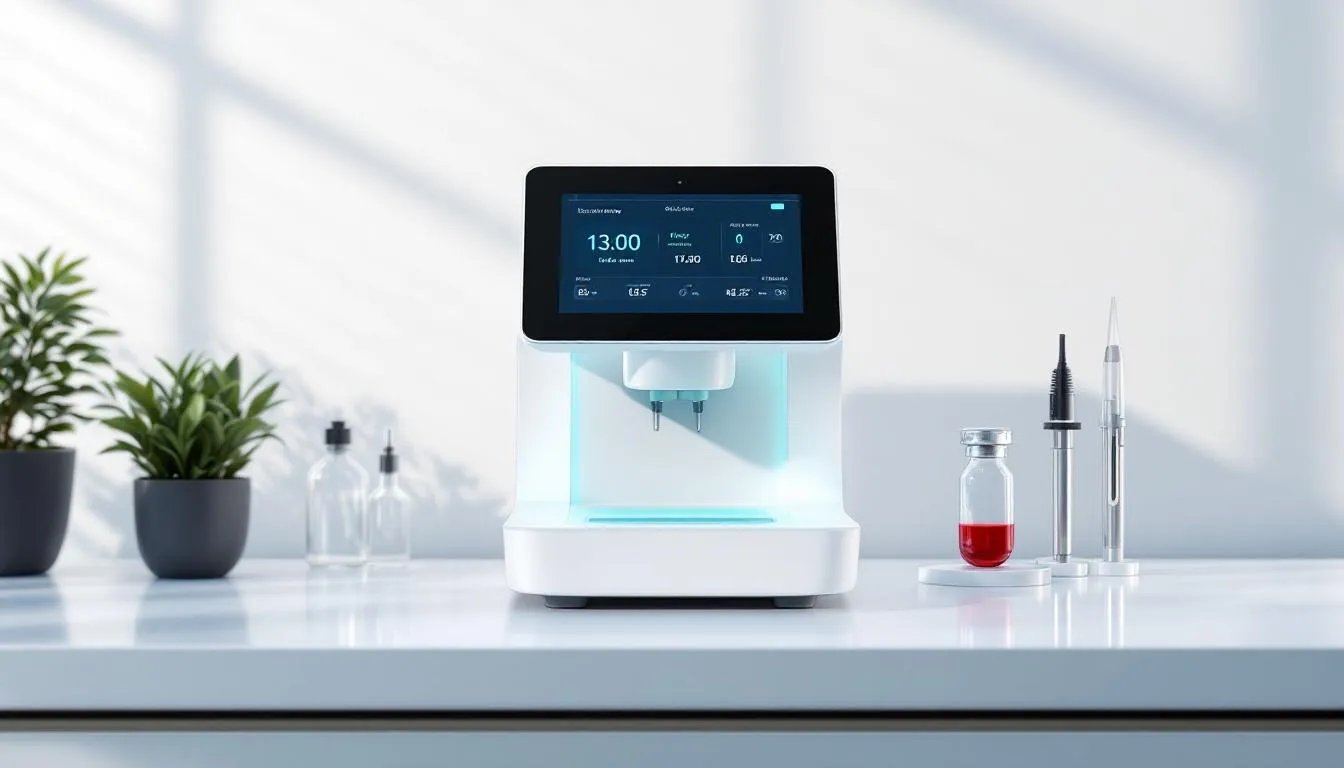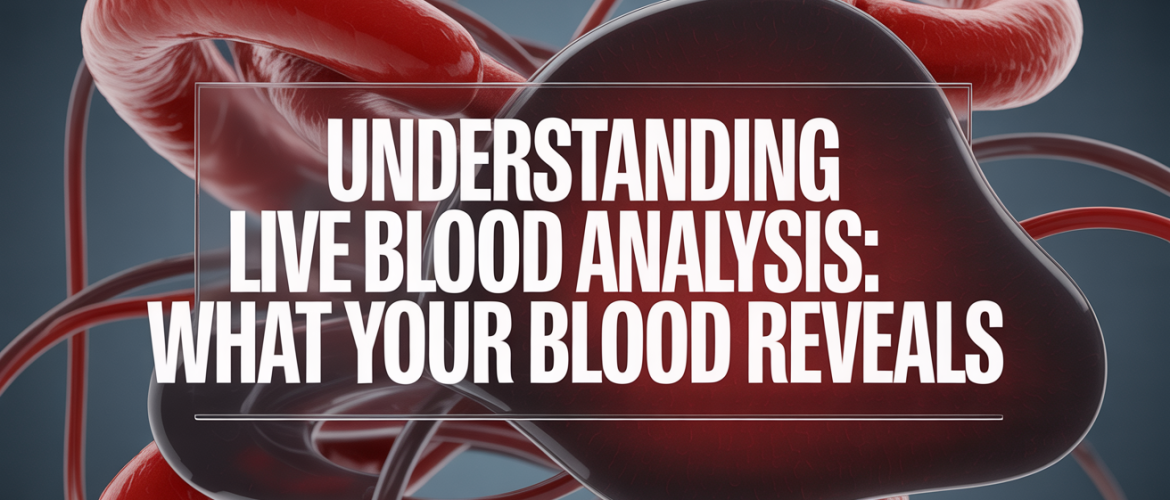Understanding Live Blood Analysis: What Your Blood Reveals
Live blood analysis is gaining traction as a fascinating tool for those who want to dive deeper into their health. Unlike traditional blood tests, this method provides a real-time view of your blood in its natural state, offering insights that go beyond standard lab results. People are increasingly drawn to live blood analysis because it allows them to see how their lifestyle, diet, and environment impact their cellular health. By observing the condition of blood cells under a microscope, individuals can gain a clearer understanding of their body’s needs.
This innovative approach to health assessment has sparked curiosity among those seeking personalized wellness strategies. It bridges the gap between conventional diagnostics and holistic health practices by focusing on prevention and early detection. As we explore what live blood analysis can reveal, you’ll discover how it stands apart from other methods and why it’s becoming a popular choice for proactive health enthusiasts. Understanding this process could be the first step toward unlocking valuable insights about your well-being.
What Is Live Blood Analysis?
Live blood analysis, also known as live blood cell microscopy, involves examining a small drop of fresh, untreated blood under a high-powered microscope. This technique dates back to the early 20th century when scientists began exploring ways to study living organisms without altering their natural state. Unlike conventional blood tests, which often use chemically treated samples, live blood analysis preserves the integrity of blood cells, allowing practitioners to observe their size, shape, and behavior in real time.
The primary difference lies in the immediacy and vitality of the sample. Traditional tests focus on quantifying specific components like cholesterol or glucose levels, while live blood analysis emphasizes qualitative observations. This means you can see how your blood cells interact, move, and function, providing a dynamic snapshot of your internal environment. By understanding these distinctions, you can appreciate why live blood analysis offers a unique perspective on health.
How Live Blood Analysis Works
The process begins with a simple finger prick to collect a tiny amount of blood, usually just one or two drops. These drops are then placed on a glass slide and covered with a coverslip before being mounted onto a dark-field microscope. Within minutes, the practitioner can project the magnified image onto a screen, allowing both the client and the practitioner to observe the blood together. This immediate visualization creates an engaging and educational experience for the individual undergoing the analysis.
Under the microscope, various components of the blood become visible, including red blood cells, white blood cells, platelets, and plasma. Each element tells a story about your health-red blood cells indicate oxygen-carrying capacity, white blood cells reflect immune function, and platelets reveal clotting ability. Observing these components in their live state helps identify potential imbalances or irregularities that might not appear in standard lab tests. The detailed imagery serves as a powerful tool for understanding your body’s current state.
What Can Live Blood Analysis Reveal?
Live blood analysis can uncover a wide range of health indicators, making it particularly useful for identifying nutritional deficiencies, immune system challenges, and signs of oxidative stress. For example, misshapen or clumped red blood cells may suggest poor oxygenation or dehydration, while sluggish white blood cells could indicate immune system dysfunction. Practitioners also look for signs of inflammation, liver congestion, and the presence of toxins or pathogens that might otherwise go unnoticed.
One of the most compelling aspects of live blood analysis is its ability to detect imbalances at an early stage, sometimes even before symptoms manifest. This makes it a valuable preventive tool, empowering individuals to address issues proactively rather than waiting for problems to escalate. Whether it’s spotting heavy metals, parasites, or abnormal cellular structures, live blood analysis provides clues about underlying health concerns that warrant further investigation.
“An LBA blood sample is not stained or treated with chemicals – it is mounted onto the microscope as soon as possible after being extracted to be able to view it in its ‘live’ state.”
Additionally, the visual nature of the analysis makes it easier for clients to connect with their health on a personal level. Seeing tangible evidence of how dietary choices, stress, or environmental factors affect their blood can inspire meaningful lifestyle changes. While live blood analysis isn’t a standalone diagnostic tool, it complements broader health evaluations by highlighting areas that need attention. This combination of insight and motivation sets it apart as a powerful ally in the pursuit of optimal wellness.
Key Benefits of Live Blood Analysis
One of the standout benefits of live blood analysis is its role in early detection. By identifying subtle changes in blood composition, practitioners can alert clients to potential health risks long before they develop into serious conditions. This proactive approach aligns perfectly with the principles of preventive healthcare, enabling individuals to take charge of their well-being through informed decisions.
Beyond its diagnostic potential, live blood analysis serves as an educational and motivational tool. Watching your own blood cells on a screen can be a transformative experience, fostering a deeper connection to your health. Clients often leave sessions feeling inspired to adopt healthier habits, knowing exactly how their choices impact their bodies. This blend of knowledge and empowerment makes live blood analysis a cornerstone of personalized wellness plans.
“Using only one or two drops of blood, we can investigate the size, shape, ratios and fine structure of the red cells, white cells and platelets in your blood.”
-Envision Health
Common Health Issues Detected by Live Blood Analysis
Among the most frequent findings in live blood analysis are signs of poor nutrition, such as vitamin deficiencies or imbalanced diets. Misshapen or pale red blood cells might point to inadequate iron or B12 intake, while excessive clumping could signal dehydration or fatty acid imbalance. These insights enable practitioners to recommend targeted dietary adjustments that address root causes rather than just alleviating symptoms.
Immune system dysfunction is another common issue identified during live blood analysis. Sluggish or overly active white blood cells can indicate compromised immunity, leaving the body vulnerable to infections or chronic inflammation. Oxidative stress, often linked to aging and disease, also shows up as damaged or fragmented cells, prompting discussions about antioxidant-rich foods and supplements. Recognizing these patterns allows clients to fortify their defenses against illness.
Toxins, heavy metals, and parasites occasionally appear in live blood samples, serving as warning signs of environmental exposure or digestive issues. Dehydration, a widespread yet overlooked problem, manifests as concentrated blood plasma, urging clients to prioritize hydration. By addressing these factors early, individuals can prevent more severe complications down the line. Live blood analysis thus acts as a mirror reflecting the cumulative effects of daily life on our health.
“By carefully studying the appearance, movement, and interactions of red blood cells, white blood cells, platelets, and plasma, practitioners can identify imbalances and deficiencies that may be impacting your health.”
Live Blood Analysis vs. Conventional Blood Testing
Conventional blood tests excel at measuring specific biomarkers, such as cholesterol, glucose, or hormone levels, using precise quantitative methods. However, these tests require chemical processing that alters the blood’s natural state, potentially missing nuances visible only in live samples. In contrast, live blood analysis focuses on qualitative observations, capturing the dynamic interactions and behaviors of blood cells in real time.
While both approaches have merit, they serve different purposes. Standard tests provide hard data for diagnosing diseases, whereas live blood analysis offers a broader, more holistic view of systemic health. Together, they create a comprehensive picture that supports tailored interventions and long-term wellness strategies. Understanding this distinction helps clarify why many people choose to incorporate live blood analysis into their health routines.

The Scientific Debate: Limitations and Criticisms
Mainstream medicine remains cautious about fully endorsing live blood analysis due to ongoing debates about its scientific validity. Critics argue that the method lacks standardized protocols and reproducibility, raising questions about its reliability as a diagnostic tool. Some studies suggest that interpretations can vary widely depending on the practitioner, underscoring the importance of professional expertise and training.
“Live blood screening is both educational and motivational. Clients are able to see a live picture of their own blood and their treatment progress.”
-Advanced Healing Arts
Despite these concerns, proponents highlight the complementary nature of live blood analysis within integrative health practices. It doesn’t aim to replace conventional diagnostics but instead enhances them by offering additional layers of information. When used alongside other assessments, it can guide personalized recommendations for nutrition, supplementation, and lifestyle changes. Acknowledging its limitations ensures realistic expectations while still valuing its contributions to preventive care.
Ultimately, live blood analysis occupies a niche space in the realm of complementary medicine. Its value lies in fostering awareness and inspiring action rather than serving as a definitive diagnostic measure. For those open to exploring alternative perspectives, it represents a stepping stone toward greater health literacy and self-empowerment. By embracing its strengths and acknowledging its constraints, individuals can make informed decisions about incorporating it into their wellness journeys.
What to Expect During a Live Blood Analysis Session
A typical live blood analysis session begins with a brief consultation to discuss your health history, goals, and any concerns you wish to explore. Afterward, the practitioner performs a quick finger prick to collect a small blood sample, ensuring minimal discomfort throughout the process. The sample is then prepared on a slide and examined under a microscope, with the live feed projected onto a monitor for you to observe alongside the practitioner.
“We are able to determine inflammation, oxidative stress, nutritional status, liver and immune health, giving an indication of overall health.”
-Envision Health
During the observation phase, the practitioner explains what they see, pointing out key features and answering questions along the way. Many clients find this interactive experience enlightening, as it demystifies complex health concepts and fosters a sense of ownership over their well-being. By the end of the session, you’ll walk away with actionable insights and a clearer understanding of how to support your body’s needs moving forward.
Who Can Benefit from Live Blood Analysis?
Live blood analysis is especially beneficial for individuals focused on preventive health measures and personalized wellness plans. Those curious about optimizing their nutrition, identifying food sensitivities, or monitoring the effects of lifestyle changes will find it particularly valuable. Athletes, busy professionals, and anyone seeking to maintain peak performance can also benefit from the detailed feedback provided by this analysis.
Moreover, people dealing with chronic fatigue, digestive issues, or unexplained symptoms often turn to live blood analysis for answers. It offers a non-invasive way to explore underlying imbalances that might not show up in conventional tests. Regardless of your starting point, live blood analysis empowers you to take control of your health journey by providing concrete, visual evidence of your body’s current state.
“This method of analysis is different from the usual laboratory tests that quantify the levels of certain components in a sample of blood. Live blood screening gives an indication as to the QUALITY of an individual’s blood – an important foundation of preventative health care…”
-Advanced Healing Arts
Choosing a Qualified Practitioner
Selecting a skilled and experienced practitioner is crucial for maximizing the benefits of live blood analysis. Look for professionals with formal training in microscopy and certifications from reputable organizations specializing in complementary health practices. A qualified practitioner should demonstrate expertise in interpreting live blood samples accurately and ethically, avoiding unfounded claims or exaggerated diagnoses.
It’s equally important to ensure that the practitioner integrates live blood analysis findings with broader health assessments. They should collaborate with medical doctors or specialists when necessary, ensuring a balanced and comprehensive approach to your care. By choosing wisely, you can trust that your session will yield meaningful insights aligned with your overall health objectives.
Integrating Live Blood Analysis Into Your Wellness Plan
Once you’ve undergone live blood analysis, the next step is translating the findings into actionable steps for improving your health. Based on the observations, practitioners may suggest dietary modifications, targeted supplements, or lifestyle adjustments aimed at addressing identified imbalances. For instance, if signs of dehydration or nutrient deficiencies emerge, you might focus on increasing water intake or incorporating specific vitamins into your regimen.
“Live Blood Analysis is used in the field of complementary medicine, often in conjunction with nutrition, naturopathy, homeopathy, acupuncture or herbalism.”
-Live Blood Analysis Training
Follow-up sessions play a vital role in tracking progress and refining your wellness plan over time. Regular reassessments allow you to gauge the effectiveness of interventions and make adjustments as needed. By integrating live blood analysis into a holistic framework that includes conventional medical care, you create a robust foundation for sustained vitality and well-being.

Potential Risks and Considerations
While live blood analysis is generally safe, there are minimal physical risks associated with the procedure, primarily related to the finger prick used to collect the sample. Most people experience little to no discomfort, though some may feel a brief sting or notice slight bruising afterward. To minimize risks, ensure that the practitioner follows proper hygiene protocols and uses sterile equipment during the session.
Another consideration is avoiding over-reliance on live blood analysis as the sole determinant of your health status. While it provides valuable insights, it should complement-not replace-traditional medical evaluations. Always consult with licensed healthcare providers to interpret results in context and avoid jumping to conclusions based solely on live blood analysis findings. Balancing enthusiasm with caution ensures a responsible approach to your health journey.
Frequently Asked Questions (FAQ)
Is live blood analysis painful?
The finger prick required for live blood analysis is minimally invasive and typically causes only mild discomfort, similar to a quick pinch. Most people tolerate the procedure well, and any sensation fades almost immediately after the sample is collected.
Can live blood analysis diagnose diseases?
Live blood analysis is not designed to diagnose specific diseases but rather to highlight imbalances and trends in your health. It serves as a complementary tool that can inform broader health evaluations conducted by licensed medical professionals.
How should I prepare for a session?
To get the most accurate results, stay hydrated and avoid alcohol, caffeine, or heavy meals before your session. Additionally, follow any specific instructions provided by your practitioner, such as fasting for a certain period or refraining from strenuous exercise.
How soon can changes be observed in my blood after making lifestyle changes?
With consistent effort, positive changes can often be seen in follow-up sessions within weeks to months, depending on the individual and the nature of the interventions. Patience and persistence are key to achieving lasting improvements.
Is live blood analysis covered by insurance?
In most cases, live blood analysis is considered a complementary or alternative health service and is not covered by insurance. Check with your provider to confirm coverage details, but be prepared to pay out-of-pocket for this type of assessment.
Conclusion
Live blood analysis offers a unique window into your health, revealing insights that extend beyond conventional testing methods. From detecting early signs of imbalances to inspiring lifestyle changes, this tool has proven invaluable for those committed to proactive health management. While it has its limitations and shouldn’t replace traditional diagnostics, it serves as a powerful complement to a holistic approach to wellness.
If you’re intrigued by the possibilities of live blood analysis, consider scheduling a session with a qualified practitioner. Inside Health Clinic specializes in helping clients understand their blood’s story and develop personalized wellness plans tailored to their needs. By combining cutting-edge techniques with compassionate care, they empower individuals to take meaningful steps toward better health. Remember, true wellness begins with knowledge-and live blood analysis is a remarkable way to deepen your understanding of your body.

